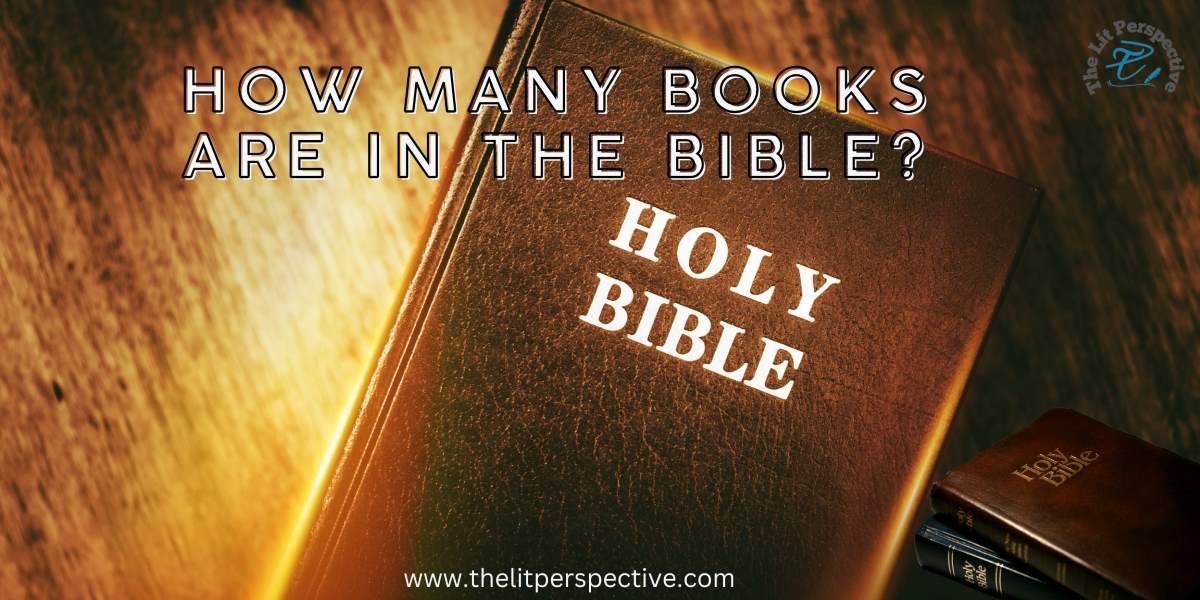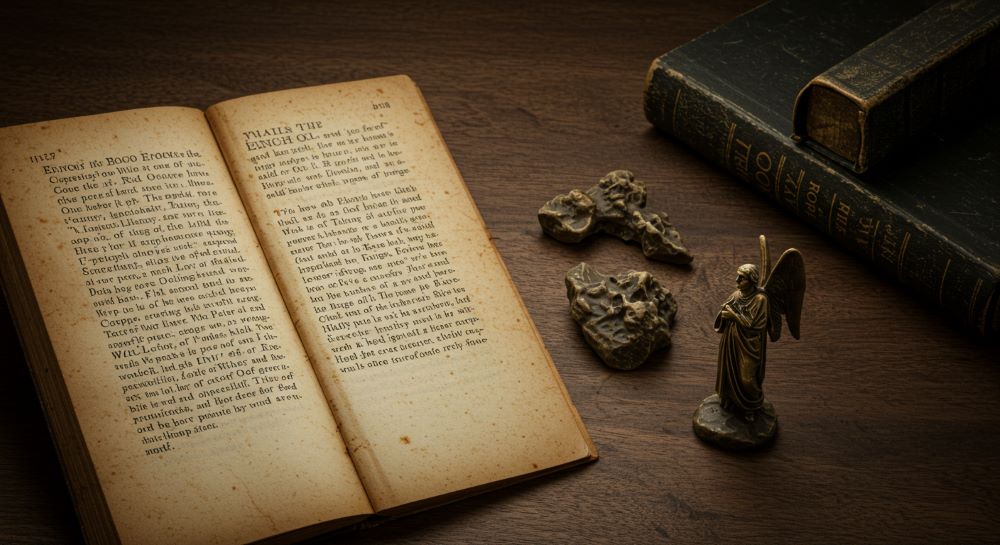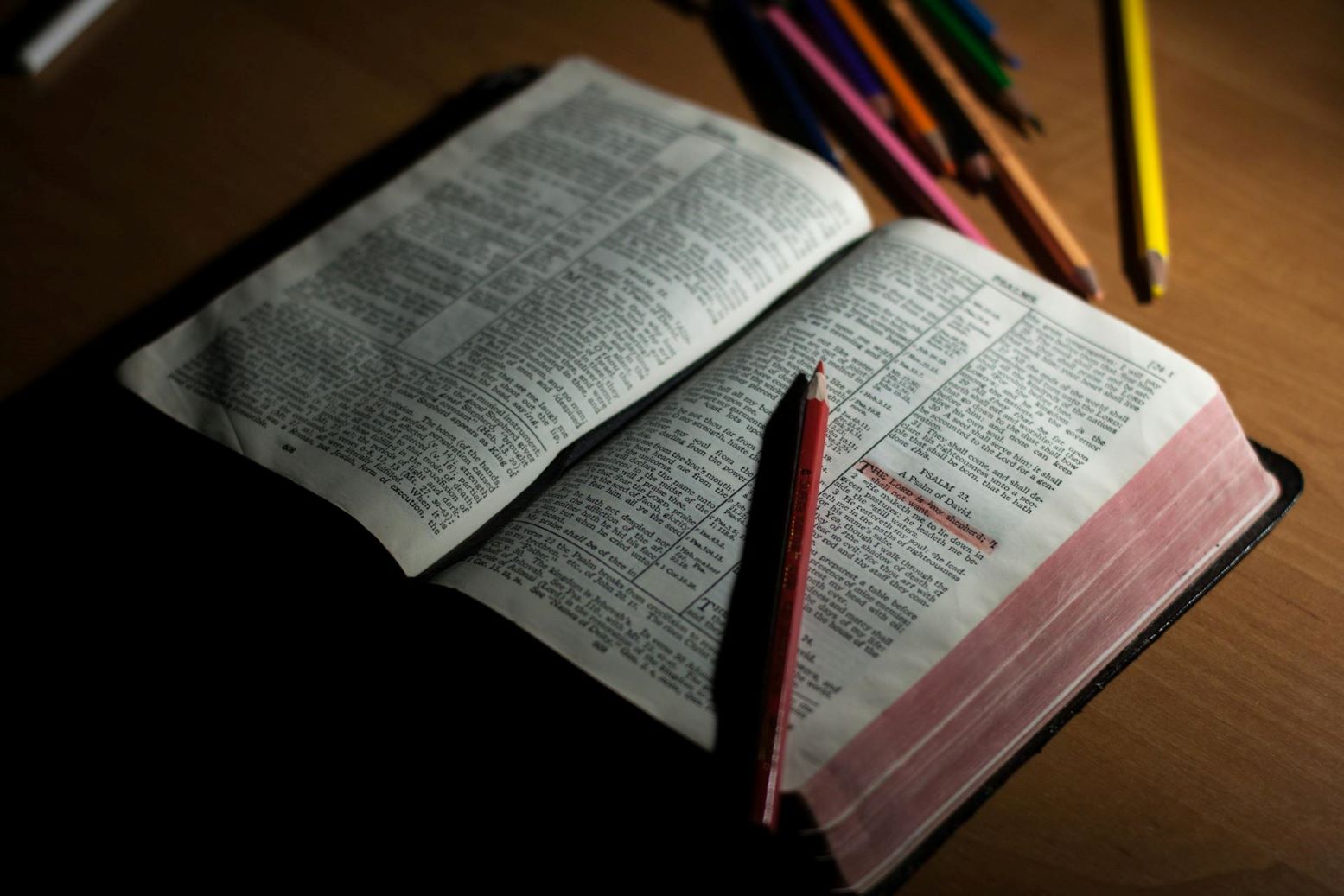TheLitPerspective is your one-stop shop for everything that ignites the spark of curiosity within you.

How Many Books Are in the Bible? A Complete Guide
Have you ever asked yourself how many books are in the Bible? Are there books that are lesser known? How are these books organized? Is the Bible only divided into the Old Testament and the New Testament?
These questions have interested readers across cultures and faiths for centuries. Understanding the structure of the Bible can feel overwhelming, but each book holds an important role in biblical history and Christian belief.
The Bible has inspired millions of people over generations. Its stories offer timeless lessons and guide Christians in their faith. When you pick up a Bible, it helps to know: what are the books of the Bible, and how many are there?
How Many Books Are in the Bible?
The Bible contains 66 books. It is divided into two main sections: the Old Testament and the New Testament.
- Old Testament: 39 books
- New Testament: 27 books
Each section has its own focus and covers different periods in biblical history.
Read also: Why Stay Away from the Book of Enoch
The 39 Books of the Old Testament
The Old Testament tells the story of God’s relationship with humanity from the beginning of time up to about 400 years before Jesus was born.
It teaches us about the creation of the world, the journey to the Promised Land, the giving of the Ten Commandments, the Babylonian exile, the songs of David, and the wisdom of Solomon.
List of the Old Testament Books
Genesis, Exodus, Leviticus, Numbers, Deuteronomy, Joshua, Judges, Ruth, 1 Samuel, 2 Samuel, 1 Kings, 2 Kings, 1 Chronicles, 2 Chronicles, Ezra, Nehemiah, Esther, Job, Psalms, Proverbs, Ecclesiastes, Song of Solomon, Isaiah, Jeremiah, Lamentations, Ezekiel, Daniel, Hosea, Joel, Amos, Obadiah, Jonah, Micah, Nahum, Habakkuk, Zephaniah, Haggai, Zechariah, Malachi.
Read also: Christian Prophecy Books for Personal Growth and Insights
The Five Categories of the Old Testament
The Old Testament is grouped into five categories:
1. The Pentateuch (Torah)
These are the first five books, also known as the Law:
- Genesis
- Exodus
- Leviticus
- Numbers
- Deuteronomy
2. Historical Books
These books record the history of Israel:
- Joshua
- Judges
- Ruth
- 1 Samuel
- 2 Samuel
- 1 Kings
- 2 Kings
- 1 Chronicles
- 2 Chronicles
- Ezra
- Nehemiah
- Esther
3. Poetry and Wisdom Books
These books offer insights on life, worship, and human experience:
- Job
- Psalms
- Proverbs
- Ecclesiastes
- Song of Solomon
4. Major Prophets
These books contain longer prophecies and messages:
- Isaiah
- Jeremiah
- Lamentations
- Ezekiel
- Daniel
5. Minor Prophets
These shorter prophetic books still carry deep meaning:
- Hosea
- Joel
- Amos
- Obadiah
- Jonah
- Micah
- Nahum
- Habakkuk
- Zephaniah
- Haggai
- Zechariah
- Malachi
Read also: 49 Most Expensive Books Sold at Auction
Who Wrote the Old Testament?
The authors of the Old Testament include Moses, David, Solomon, and various prophets like Amos, Hosea, and Micah. Each writer shared personal experiences and divine messages, shaping the foundation of Christian theology.
The 27 Books of the New Testament
The New Testament introduces Jesus Christ and the formation of the early church. It reveals Jesus as “the way, the truth, and the life” (John 14:6).
It shows how both Jews and Gentiles became the children of God through faith in Jesus. The New Testament also records the spread of the gospel during the time of the Roman Empire.
List of the New Testament Books
Matthew, Mark, Luke, John, Acts, Romans, 1 Corinthians, 2 Corinthians, Galatians, Ephesians, Philippians, Colossians, 1 Thessalonians, 2 Thessalonians, 1 Timothy, 2 Timothy, Titus, Philemon, Hebrews, James, 1 Peter, 2 Peter, 1 John, 2 John, 3 John, Jude, Revelation.
Read also: What God Wants From People
The Four Categories of the New Testament
1. The Gospels
The Gospels present the life, teachings, death, and resurrection of Jesus:
- Matthew
- Mark
- Luke
- John
Each gospel provides a unique view of Jesus’ ministry and mission.
2. The Acts of the Apostles
Acts, written by Luke, describes the growth of the early church after Jesus’ ascension.
3. The Epistles
There are 21 letters (epistles) that guide believers in faith and practice:
- Pauline Epistles (14 letters by Paul): Romans to Philemon
- General Epistles: Hebrews to Jude
4. The Book of Revelation
Revelation, written by John, contains prophetic visions about Jesus’ return and the end of the world.
Key Differences Between the Protestant, Catholic, and Hebrew Bibles
The Protestant Bible
The Protestant Bible includes 66 books. It became the standard for most Christian denominations after the Reformation led by Martin Luther in the 1500s.
Read also: Silent Praise: When Silence Carries the Loudness of Praise
The Roman Catholic Bible
The Catholic Bible includes 73 books. It adds seven deuterocanonical books:
- Tobit
- Judith
- 1 Maccabees
- 2 Maccabees
- Wisdom of Solomon
- Sirach (Ecclesiasticus)
- Baruch
These books are accepted by the Catholic Church but not by Protestants.
Read also: Finding God at Rock Bottom: Suffering to Transformation
The Hebrew Bible (Tanakh)
The Hebrew Bible has 24 books, organized into:
- Torah (Law)
- Nevi’im (Prophets)
- Ketuvim (Writings)
The content overlaps with the Christian Old Testament, though arranged differently.
Read also: Spreading the Word: How to Write Down Your Testimony
Other Ancient Bibles
The Syriac Bible, one of the oldest translations, was written in Aramaic. It includes Old Testament and Christian scriptures, along with some non-canonical texts.
How Was the Bible Put Together?
After Jesus’ apostles died, early Christians used various scrolls and writings. Between 320 A.D. and 400 A.D., church councils gathered to decide which books were inspired by God.
The Council of Nicaea (325 A.D.), led by Emperor Constantine, helped organize key doctrines. By 395 A.D., the Old Testament was set. The New Testament canon was confirmed soon after.
Read also: How Jesus Christ Makes Us Better
Why Does the Bible Matter Today?
The Bible is read by over 2 billion Christians worldwide. It shapes beliefs, ethics, and values across cultures. The Bible remains a powerful guide for spiritual growth, moral decisions, and understanding God’s plan.
According to a 2022 survey by the American Bible Society, 39% of U.S. adults read the Bible at least three times per year, showing its ongoing influence.
Frequently Asked Questions
The Bible contains 66 books: 39 in the Old Testament and 27 in the New Testament.
The Catholic Bible includes seven extra books in the Old Testament, known as the deuterocanonical books.
Early church councils between 320 A.D. and 400 A.D. determined the canon of Scripture based on apostolic authorship and consistency with Christian teaching.
3 John is the shortest book in the Bible, with only one chapter and 14 verses.
Different Bible versions result from translation choices, manuscript discoveries, and theological perspectives. Examples include the King James Version (KJV), New International Version (NIV), and English Standard Version (ESV).
What Can You Do Next?
If you want to deepen your understanding of the Bible, start by reading one book at a time. Many recommend beginning with the Gospel of John to learn about Jesus.
You can also join a Bible study group, use a Bible reading app, or read a study Bible with helpful notes.
Pick up your Bible, explore its books, and let its message shape your life.
Whether you are new to the Bible or have read it for years, every book holds wisdom worth discovering.
“Your word is a lamp to my feet and a light to my path.” (Psalm 119:105)
TheLitPerspective is your one-stop shop for everything that ignites the spark of curiosity within you.



